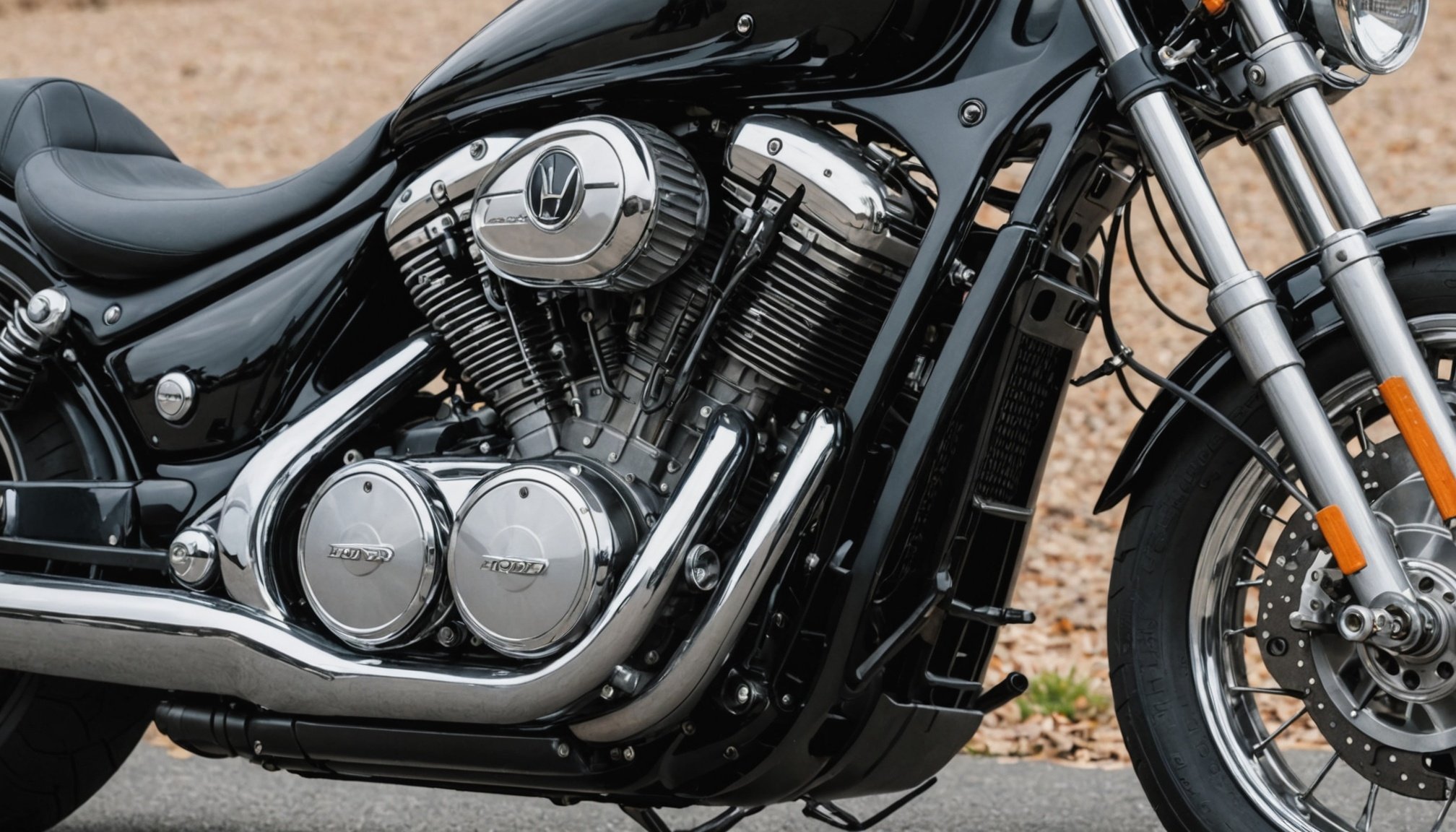Overview of Oil Change Process for Honda Fury
Regular oil changes are crucial for maintaining your Honda Fury, ensuring it runs smoothly and efficiently. Proper motorcycle maintenance helps prolong the life of your engine, preventing costly repairs down the line. The oil change process involves a series of systematic steps to replace old oil and filters, providing your vehicle with the optimum lubrication it needs.
Honda Fury maintenance begins with assembling the necessary tools and understanding the basic steps involved in an oil change. This not only includes draining the old oil but also replacing the oil filter which is responsible for removing contaminants from the engine oil. Performing these steps carefully is essential to maintaining engine health.
Topic to read : Revamp your kawasaki ninja 300: a comprehensive guide to perfecting diy paint touch-ups for a stunning look
Undertaking DIY oil changes is beneficial, as it allows you to directly monitor the quality of oil and the condition of the filter. Additionally, it offers cost savings compared to professional servicing. Focusing on the correct sequence of steps ensures a successful oil change, safeguarding the engine against potential wear and tear.
By staying informed and prepared, you can make the oil change process a streamlined part of your motorcycle maintenance routine, ensuring your Honda Fury remains reliable and efficient on the road.
Also to see : Transform your kawasaki klr650 experience: ultimate suspension upgrades for unmatched comfort and performance
Required Tools and Materials
For a smooth oil change process on your Honda Fury, assembling the right oil change tools is crucial. This ensures efficiency and decreases the likelihood of mistakes. Begin with a wrench set, essential for removing bolts and accessing the oil drain plug. A quality oil filter wrench is also necessary to assist in replacing the filter without damage.
Consider investing in a good oil catch pan for collecting used oil, preventing spills. Additionally, collecting a few old rags can help clean residual oil spills, ensuring a neat workspace. A funnel helps in safely adding fresh oil, reducing mess.
When selecting motorcycle maintenance supplies, choose the oil type recommended by Honda, usually a high-quality 10W-30 or 10W-40. Selecting the correct oil filter designed specifically for your Honda Fury helps maintain optimal engine performance.
Don’t overlook the need for suitable containers to store old oil until it can be disposed of responsibly at a recycling center. This not only follows environmental guidelines but is crucial for responsible motorcycle maintenance. Equipping yourself with these tools and materials promotes a successful DIY oil change, saving you time and offering peace of mind.
Step-by-Step Guide to Changing Oil
Changing the oil on a Honda Fury involves following structured oil change instructions to ensure a smooth process.
Preparing for the Oil Change
Start by organizing your workspace with the required oil change tools and motorcycle on a stable surface. Secure the necessary supplies, including a quality oil filter, the recommended oil type, and items for oil disposal.
Draining the Old Oil
Position an oil catch pan beneath the drain plug. Use a wrench to carefully remove the plug, allowing the old oil to drain completely. This step minimizes environmental hazards and ensures the system is devoid of old oil residues.
Replacing the Oil Filter
After draining the oil, remove the used oil filter with an oil filter wrench. Ensure the new filter is compatible with the Honda Fury. Apply a small amount of fresh oil to the filter’s rubber seal, then fasten the new filter securely, avoiding over-tightening. This helps prevent leaks and ensures efficient oil circulation.
Systematically following these steps not only supports optimal engine performance but promotes a successful DIY oil change. Remember, maintaining attention to detail during this guide aids in upholding your motorcycle’s health.
Post-Change Procedures
After a successful oil change on your Honda Fury, a comprehensive oil change checklist ensures everything is in order. Begin by checking the oil level using the dipstick. Insert it fully, remove, and inspect to ensure the oil line sits between the high and low markers. This verifies that your engine has adequate lubrication for optimal performance.
It’s vital to inspect for any oil leaks after replacing the drain plug and filter. Tighten if necessary, but avoid over-tightening to prevent damage. Leaks compromise engine reliability and can lead to mechanical issues if ignored.
Proper disposal of used oil and filters is not only responsible but essential for environmental conservation. Seal old oil in a secure container and take it to a designated recycling center. Never dispose of inappropriately, as haphazard disposal is hazardous.
Regularly revisiting your motorcycle maintenance schedule, including oil changes, maintains your Fury in top condition. A reliable bike is safer and performs better on the road.
By following these post-change procedures, you ensure your Honda Fury remains reliable. It’s all about setting a precedent for excellent maintenance habits, extending the life of your motorcycle while ensuring environmental responsibility.
Common Mistakes to Avoid
Oil change errors during DIY motorcycle maintenance on a Honda Fury can lead to various issues. Being aware of common pitfalls helps ensure a successful oil change. One frequent error is using the wrong oil type or filter. Always adhere to Honda’s recommendations to avoid engine problems and maintain optimal performance.
Another mistake is inadequate draining of old oil. Allow the oil to drain completely by positioning the bike on a level surface. Leaving old oil behind can cause contamination and harm engine health. Additionally, over-tightening the oil drain plug or filter is a common error. This can damage threads, leading to oil leaks, which may compromise engine reliability. Fastening components securely but not excessively tight will help avert these problems.
Ensure proper sealing by cleaning the oil cap area, preventing dirt or debris from entering. Ignoring this can lead to premature wear and damage. By taking these tips into account, you make your DIY motorcycle maintenance more effective, reducing the likelihood of mistakes that can damage your motorcycle over time. A careful approach will benefit your Honda Fury’s longevity and performance on the road.
Troubleshooting Tips
Understanding potential issues after an oil change can prevent significant Honda Fury issues down the line. If you notice the oil pressure warning light, it indicates that the engine isn’t receiving sufficient lubrication. Immediate action is crucial to avoid engine damage. First, stop the engine and check the oil level using the dipstick. Low oil could mean leaking or improper refilling.
Oil leaks are another concern. If observed, re-examine the drain plug and oil filter. Ensure they are correctly installed but not overly tightened, which could damage threading. Use a clean rag to wipe away excess oil and monitor if fresh leaks appear. Persistent leaks may require replacing seals or contact a professional for further inspection.
Listening to the engine pays off too. Any unusual noise might indicate inadequate oil flow or contaminants left after the oil change. Investigate by ensuring the correct oil type was used and consider replacing filters if problems persist.
Regular motorcycle maintenance practices, including monitoring and troubleshooting, safeguard your Honda Fury against potential oil change troubleshooting issues, keeping it running smoothly.
Maintenance Advice for Honda Fury
Routine motorcycle maintenance tips are pivotal for sustaining your Honda Fury’s longevity and performance. One core aspect is adhering to the recommended oil change frequency, which ensures that the engine receives essential lubrication and debris removal, thus safeguarding against wear. Most manufacturers advise an oil change every 4,000 to 8,000 miles, but always consult your manual for model-specific guidance.
In addition to oil changes, integrating other maintenance activities enhances overall care. Regularly inspecting brake pads, tyres, and chains ensures all components are in peak condition. This holistic approach minimizes potential issues while on the road and enhances safety.
Using quality materials and parts is another significant factor in Honda Fury care. Opt for high-quality oil and filters specifically designed for motorcycles to maintain optimal engine health. Equating cost with quality here saves more than it costs over your bike’s lifespan.
Investing time and effort into these maintenance practices not only improves performance but also fosters a deep understanding of your motorcycle’s needs. This proactive approach ensures reliability, extends your bike’s lifespan, and ultimately enhances your riding experience.
Frequently Asked Questions (FAQs)
Navigating the maze of oil change FAQs for your Honda Fury can be daunting. New motorcycle owners often wonder: What kind of oil should I use? For optimal performance, Honda typically recommends high-quality 10W-30 or 10W-40 motor oil, designed to ensure the engine runs smoothly. This type of oil effectively lubricates the engine components, preventing wear and facilitating efficient movement.
Another frequent query is about oil filter compatibility: Which oil filter should I purchase? Always opt for a filter designed specifically for the Honda Fury, as this ensures a proper fit and effective filtration. Using non-compatible filters can lead to inefficient oil circulation and potential engine issues over time.
For those new to motorcycle maintenance, helpful advice includes scheduling regular oil changes. How often should you do this? Many manufacturers suggest every 4,000 to 8,000 miles, but check your owner’s manual for guidance. Consistently maintaining your oil change routine ensures the longevity of your engine and optimizes your Honda Fury’s performance. Staying well-informed and adhering to these recommendations can make motorcycle ownership a smoother and more enjoyable experience.











